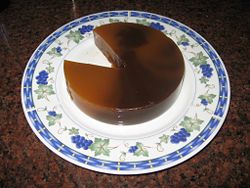
This is a list of notable sweet potato dishes. The sweet potato is a starchy, sweet-tasting tuberous roots used as a root vegetable. [1] [2] The young shoots and leaves are sometimes eaten as greens. The sweet potato is only distantly related to the common potato (Solanum tuberosum), both being in the order Solanales. Although darker sweet potatoes are often referred to as "yams" in parts of North America, the species is not a true yam, which are monocots in the order Dioscoreales. [3]





